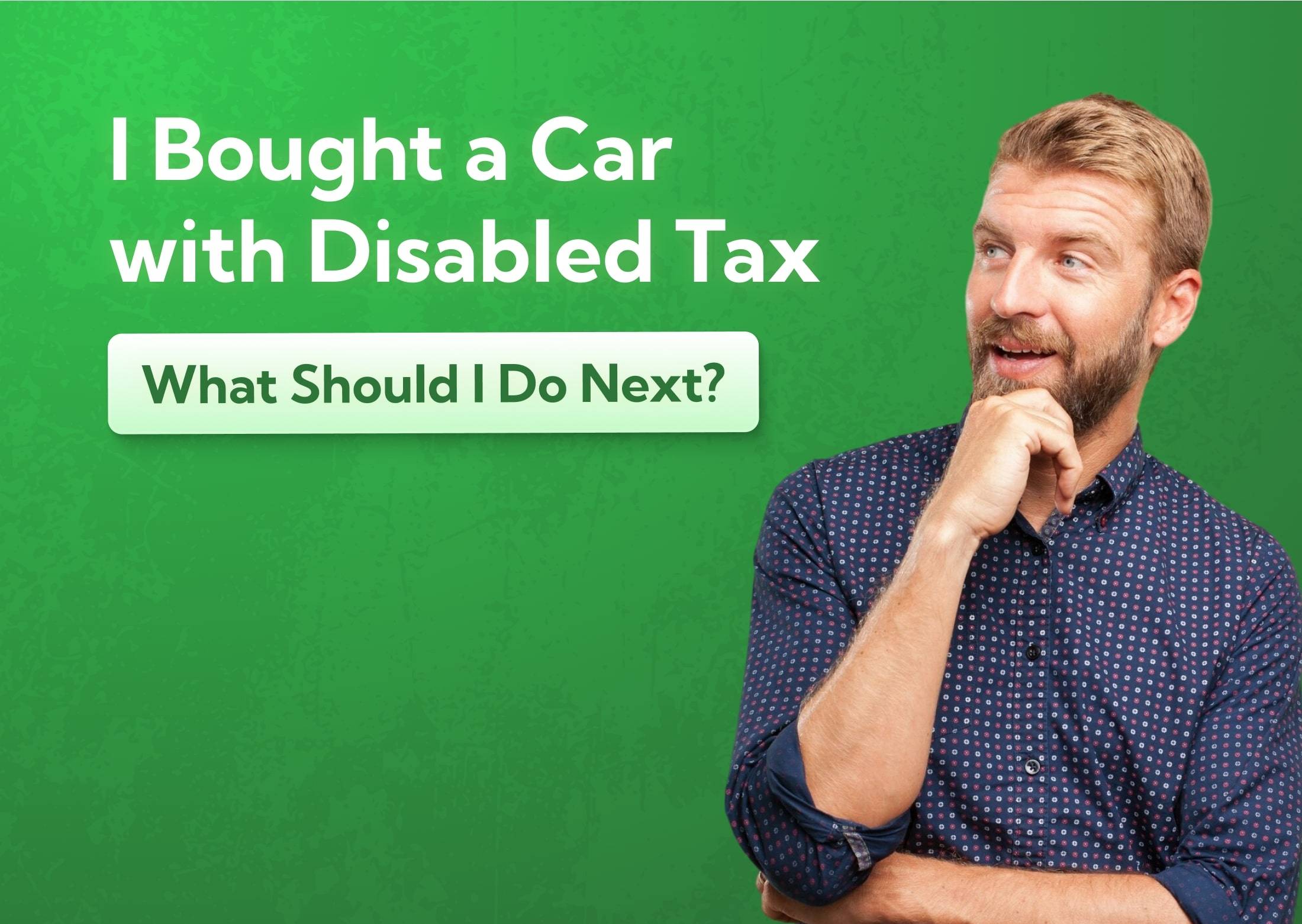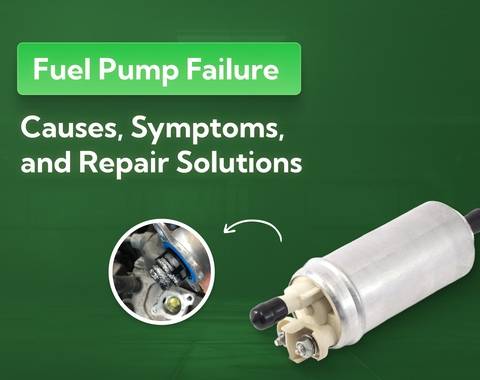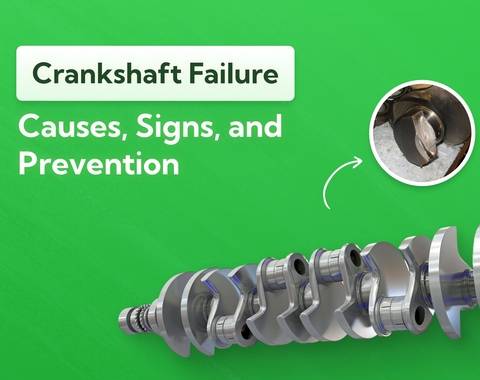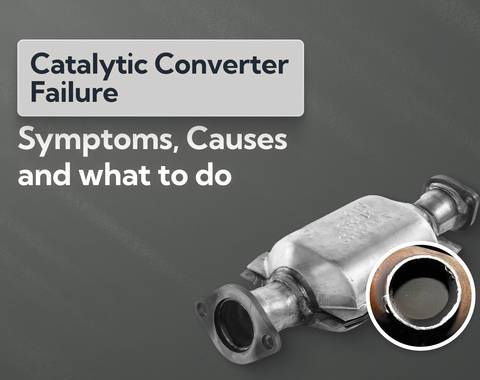I Bought a Car with Disabled Tax – What Should I Do Next?
Buying a car only to discover it has disabled tax can be confusing. This guide explains what it means, if you can drive it, and how to sort it with the DVLA.
Last updated: 17th October, 2025

Award-winning CEO driving growth and social impact across automotive, recycling, and technology-led enterprise platforms.

Listen to this story
So you bought a car! How exciting. Except you’ve just encountered an unexpected glitch in the process, and found that its tax registration status is… unexpected.
If you’re nervously typing into Google “I have bought a car with disabled tax”, don’t worry. In this article, we’ll cover everything you need to know about disabled car tax (or SV 350), what it means for your new purchase, whether you can drive it, and what you need to do next.
No need for drama, buying a car with a disabled tax status is common, and handling the admin, payments, and refunds is bread ‘n butter work for DVLA. Let’s cover what you need to know.
What's in this article
- 1. What Does Disabled Car Tax Mean in the UK?
- 2. Can You Drive a Car With Disabled Tax If You Are Not Eligible?
- 3. What You Need to Do After Buying a Car With Disabled Tax
- 4. Step-by-Step Guide to Correcting Car Tax After Purchase
What Does Disabled Car Tax Mean in the UK?
In the UK, if you have a disability and drive, you can apply for a car tax exemption or reduction. If your application is approved, your vehicle is placed in the disabled tax class, and you pay less Vehicle Excise Duty (VED). Here are some things to know about disabled VED.
You can get a 100% car tax exemption if you are disabled and in receipt of mobility benefits. These include the:
- Higher Rate Mobility Component of Disability Living Allowance
- Enhanced Rate Mobility of Personal Independence Payment, and/or
- War Pensioners’ Mobility Supplement.
Disabled car tax is logged as SV 350 by the DVLA. So if you’re saying “I bought a car with disabled tax”, you’ll need to change the tax class (unless, of course, you also qualify for the disability reduction or exemption in VED).
What the experts say

Anthony Sharkey
Can You Drive a Car With Disabled Tax If You Are Not Eligible?
In short, no, you can’t. Disabled car tax exemptions or deductions are only offered for disabled drivers who use that vehicle for their own personal benefit. Nominated drivers can also use the disabled tax car, but again, only to drive the person with the qualifying disability.
The point of the disability car tax is that it benefits the person who has the qualifying disability, and makes it easier and more affordable for them to have access to a car.
So, if you have a car with a disabled tax on it that you aren’t eligible for, it’s basically akin to driving an untaxed vehicle. If you aren’t personally eligible for this discount, you’ll find yourself facing penalties, fines, and even the risk of prosecution.
Don’t risk it!
If you drive without car tax or with the incorrect car tax in place, the risks of being caught are very high. The DVLA and police now use Automatic Number Plate Recognition (ANPR) cameras, which can instantly detect untaxed vehicles and trigger automatic letters.
So, if you’ve bought a new car, check its tax status. If you’ve bought a car with disabled tax, it isn’t valid unless you also have a qualifying disability. So, let’s look at what you need to do now.
What You Need to Do After Buying a Car With Disabled Tax
Saying “I bought a car with disabled tax, what now?” Good question. Firstly, don’t panic. If you’ve bought a car with a disabled tax classification, you can correct it quickly and easily. However, you need to take steps to do so quickly, so that you don’t find yourself in breach of the law.
Step-by-Step Guide to Correcting Car Tax After Purchase
Make it easy on yourself and follow this guide to update your car’s VED status, and avoid fines, penalties or legal action.
Declare Change of Keeper With the DVLA
Wondering how to tax a second hand car? It’s easy. When you buy a new car, you’ll get a V5C logbook from the seller (or complete the change of keeper form online.) This lets the DVLA know that you’re now the registered keeper of the vehicle and responsible for it.
Step one: make sure this is done. If not, complete the V5C and submit it to the DVLA. Until this has been done, you can’t apply to correct the vehicle’s VED tax status. If you are still waiting on the logbook, you can still tax a car without V5 online via the DVLA.
Apply for New Tax Online or at the Post Office
With the V5C form registered, you are now officially the keeper of the car. Now you can re-tax it in your name at the correct fee. To do this, either:
- Find the 12-digit reference number for the vehicle on your V5C/2 form (also known as the new keeper slip). Use this to apply for correct car tax at GOV.UK.
- Alternatively, take your form to the Post Office and they’ll do it for you. (It may need to be a larger branch, but you can check the services offered online before you visit a Post Office in person.)
Can you transfer disabled car tax? No. You need to pay the standard rate that applies to your vehicle, which is based on factors such as engine size, carbon emissions, and its price at registration (in the case of the luxury car supplement).
Documents You’ll Need to Complete the Process
Gather up your documents! To tax your new car you’ll need the V5C/2 form, or the full logbook. You’ll also need to have the car’s valid MOT certificate (unless it is exempt.)
Bear in mind too that if you buy road tax at the Post Office, you may also need to show proof that the car is insured. Take it just in case. And check out our recent blog posts on car taxation and insurance, so you get the order right!
What Happens to Any Unused Disabled Tax
When you update the car tax in your name, the DVLA will update its system and then cancel the prior tax exemption. If there are any unused months of tax, the DVLA will automatically refund this… but to the original owner. Never mind.
Refunds and Payments in This Situation
Let’s take a look at refunds and payments if you’ve bought a car with disabled tax.
Will the Previous Owner Get a Refund?
Yes, where it is due. Any refund of unused disabled tax will go to the car’s original registered owner, which is the disabled person or their representative, depending on the situation. This refund takes place automatically when the DVLA database is updated.
Are You Responsible for Paying Backdated Tax?
No, this is the good news. You only tax your new car from the date that you bought it. You’re not responsible for paying tax on any prior period.
How Refunds Are Processed by the DVLA
The DVLA sends refunds by cheque (yes, cheques still exist), and they go to the previous keeper, at the address logged on the V5C. The refund amount is only calculated in whole months. Partial months are not refunded.
Common Mistakes When Buying Cars With Disabled Tax
Telling your significant other, “I bought a car with disabled tax”? Don’t unwittingly break the rules! These are all common mistakes to avoid.
Assuming the Tax Transfers Automatically
Even in today’s highly digitised age, car tax doesn’t automatically transfer between owners. And this is especially the case with disabled car tax, because it’s an exemption tax. So the moment you become the registered keeper of a new car, you must re-tax it correctly.
Driving Untaxed While Waiting for DVLA Updates
Has someone told you “oh it’s fine to wait until the DVLA sends your paperwork”. Nope. Don’t take the risk. While you’re waiting for that updated V5C to come through, just get on and tax the car. Do it immediately, and then you won’t have to think about it for another year.
Not Checking Insurance and MOT Status Alongside Tax
Look, everyone falls down on their admin. But today’s digital tools mean you don’t have to keep paperwork to know what’s going on! Do a 30-second free check to know the status of your car’s legal obligations at any time!
To Sum Up
Holding a cuppa, shaking your head and muttering to yourself, “I have bought a car with disabled tax” is a familiar situation for many, but not something to worry about… if you deal with it quickly.
To recap, the three things you need to do, without delay, are register yourself as the new keeper, re-tax the car at the correct VED rate, and check that the MOT and your car insurance are in place and valid.
Remember that you cannot legally drive your car with disabled tax on it, unless you personally qualify for it yourself. And refunds on any unused portions of the disabled tax will go to the previous owner.
Frequently asked questions
Nope. When the ownership changes, the prior exemption ends. Unless you are also personally eligible for disabled car tax.
Yes, before you drive the car, you must tax it. If you can’t tax it because you haven’t set up car insurance, organise drive-away or short-term insurance (which can be as short as one hour), and then tax it.
No, not legally. You need to update the tax in your name first. See if the dealership or driver that’s selling it to you will deliver it while you’re organising your tax and insurance.
Potentially an unholy trinity of fines, driving licence penalty points, and a clamped car. Just don’t risk it.
No, as they are completely different things. Even if you have insurance in place, it’s still illegal to drive your car untaxed.
Any refund on disabled car tax will go back to the previous buyer who purchased it.
Only if they are the disabled car owner’s nominated driver, and using the car to primarily benefit the driver. If not, then it’s basically tax fraud.
Use our free tax check for a tax status search in just a few seconds. It couldn’t be easier!
Yes. All vehicles must be retaxed to their correct class, including electric vehicles.
Sure. If you’re not going to use the vehicle and you’re storing it off the highway, you can register it under SORN. This will remove the need to pay Vehicle Excise Duty.
Need to make some car tax changes? You don’t need to tell the DVLA if you want to change car tax direct debit. You can just do it via your bank. To cancel car tax and apply for a refund, contact the DVLA or complete the process online.
About Car.co.uk

Share on
Latest news & blogs










